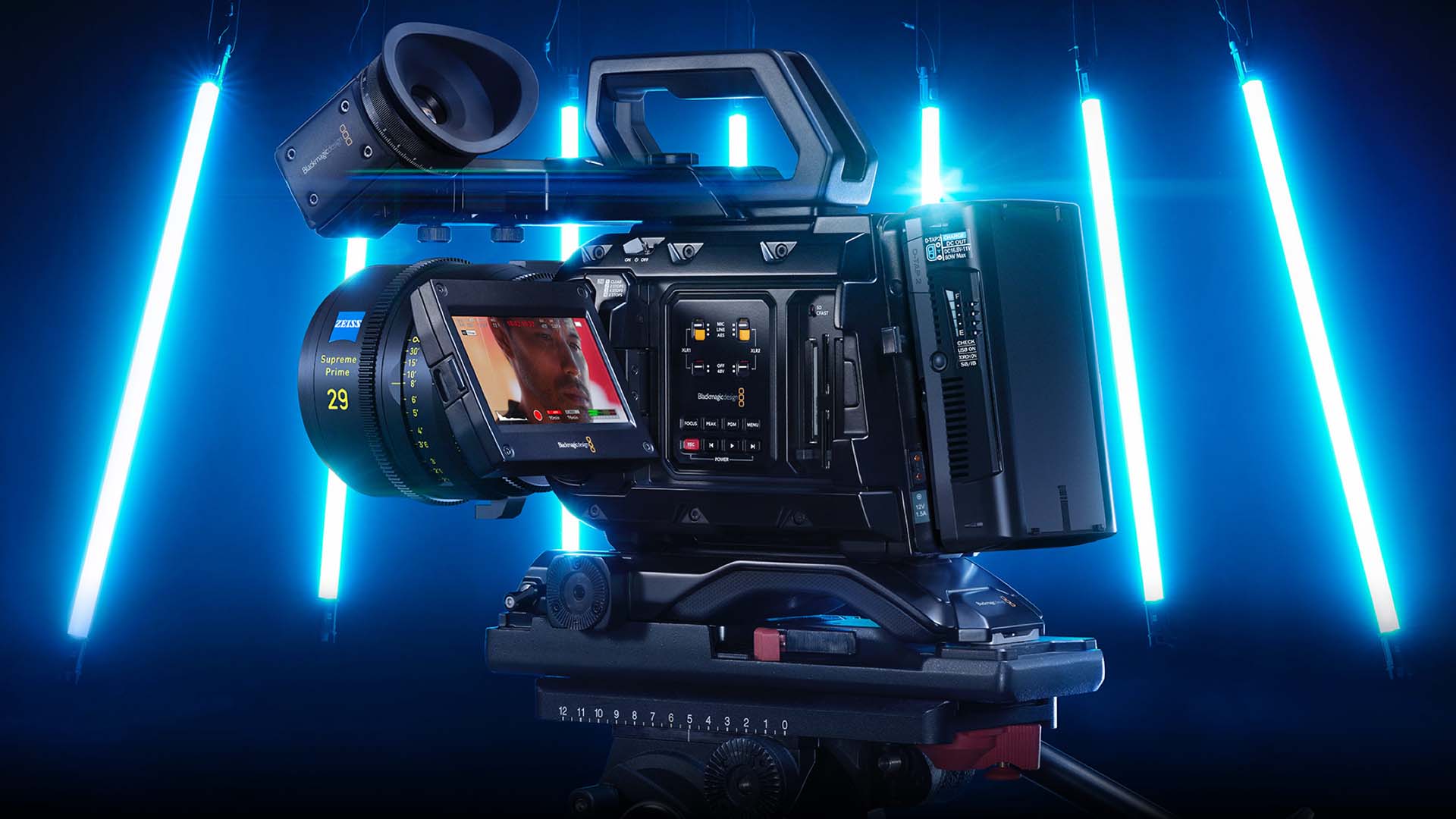
We reviewed the URSA Mini Pro 12K when it first arrived. However it has been updated since then, machines like the M1 Macs are here, and the price has been reduced. We asked Rakesh Malik to take another look at the camera after experiencing the device during production use.
Thanks to the recent price drop, the UMP 12K has again generated quite a bit of buzz. 12K cameras in the wild have been quite rare, so information and reviews of the cameras have been sparse.
While the camera has remained in short supply, BMD has been working to perfect the color science and decoding performance of the camera while also working to overcome the supply chain disruptions that have plagued the globe lately. Now that the SDK is ready for prime time and the supply issues are resolved, it’s time to try this camera out in production.
Feature Highlights
Blackmagic Design hasn’t changed the industrial design of the camera significantly. The chassis is made from BMD’s reinforced polycarbonate, so it’s lighter than one would expect given its size, but it still feels solid and ridge in use. The operator side is covered with physical controls, even on the outside of the monitor, making the most common operations available quickly even with the display closed, great for those who prefer to use BMD’s excellent viewfinder.
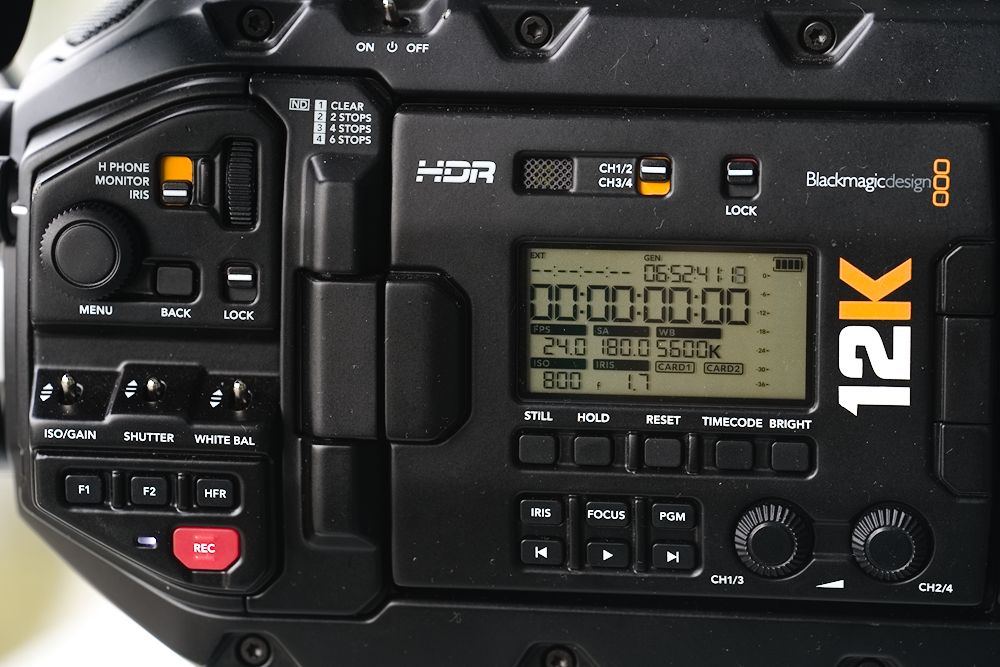
Controls are well placed. Image: Rakesh Malik.
While having the controls on the operator side reflects the owner/operator audience the camera is optimized for, there are plenty of mountain points and SDI ports for connecting a field monitor for an AC.
The screen is very good, and did the job even outdoors on a sunny Vancouver beach. Ensconced behind the monitor are the two CFast2 slots and the SD card slot along with a suite of physical controls for operating the camera and switches for mic input settings. On the outside of the monitor door is a status monitor and several additional physical controls, including knobs for setting the audio levels. Though the camera also has audio level controls on the tough screen, the knobs are easier to use with precision. The camera’s external controls provide access to the settings that matter shot to shot. Less common actions like formatting memory cards and setting the resolution and quality options do require opening the door, but once the camera is set and ready for production, there’s no need to open the monitor door until it’s time to switch memory cards.
The physical controls on this camera are common on higher end cameras, and generally rare on lower end ones. Physical controls add cost both in design and in manufacturing over a touch screen interface, though they’re often easier and quicker than touch screen controls. That Black Magic has implemented such a robust array of physical controls at this price point is quite an accomplishment on its own.
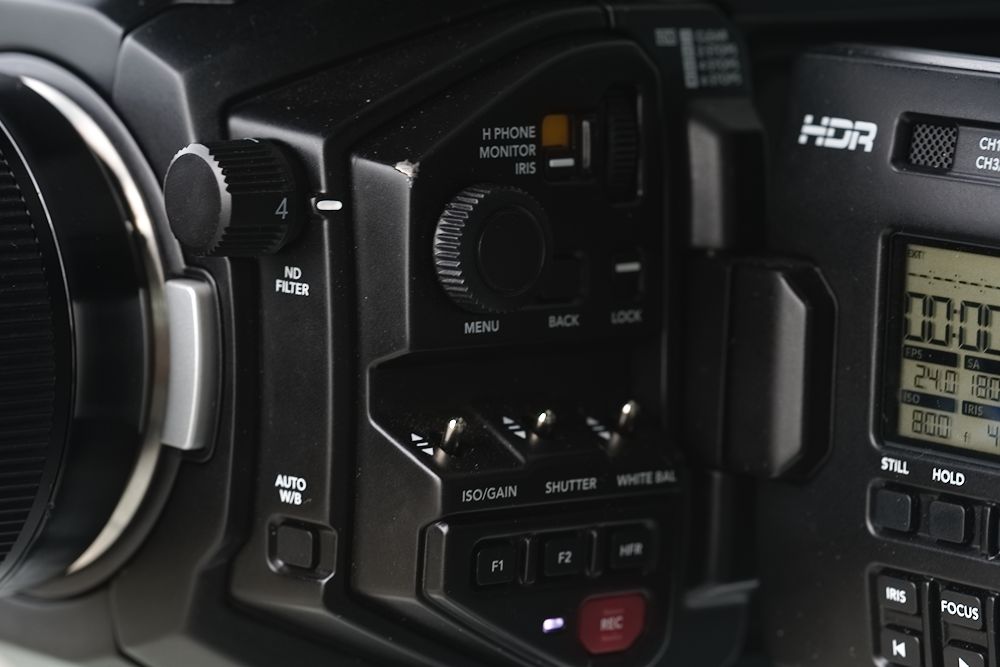
Controls are familiar, making the camera easy to use. Image: Rakesh Malik.
Though it wouldn’t be a good idea to change lens mounts in the field or on set, it’s pretty easy to do. It’s just a matter of removing screws, installing the right combination of shims, and putting the desired mount in place. The EF mount has four screws, and the PL mount has a fifth screw that’s hidden under one of the flanges of the lens mount when the other four are accessible. The process takes only a few minutes. Adding shims is similar; remove the mount, insert the required shim, and reattach the mount. Though it sounds a bit tedious, it’s only necessary once with a given set of lenses, and probably not necessary for electronic lenses.
Image quality
Every time a camera manufacturer introduces a higher resolution sensor, there are concerns about whether the manufacturer sacrificed quality for quantity. The 12K with its huge 80 megapixel resolution is no exception, especially since it has a Super35 format sensor, rather than a larger Vista Vision format.
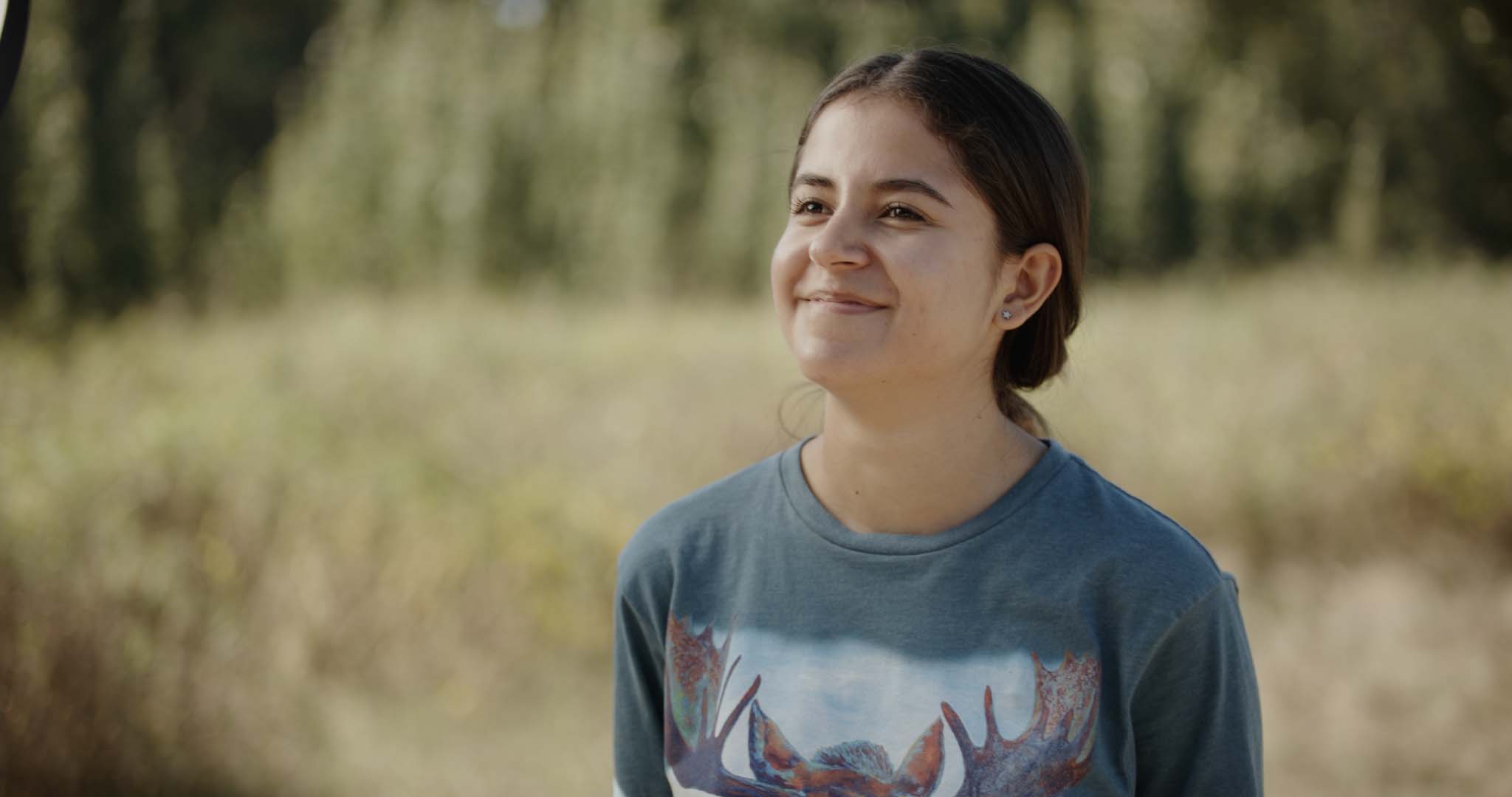
The colour science is excellent, and handles well on the M1 Mac. Image: Rakesh Malik.
The other factor that can be quite off putting is the data rate. Even with the efficiency of BRAW, 12K is a lot of data.
Of course, I captured some 12K footage at sunset by the Fraser River. With 80 megapixels of resolution, a lot of detail is hardly surprising, but the color rendition is beautiful even by Blackmagic’s standards. Quality wise the image is right up there with any professional grade stills camera. Definitely no problems as far as image quality.
While not designed to be a low light monster, it’s no slouch. When shooting into to the sun, the deep shadows remain impressively clean, with minimal shadow noise.
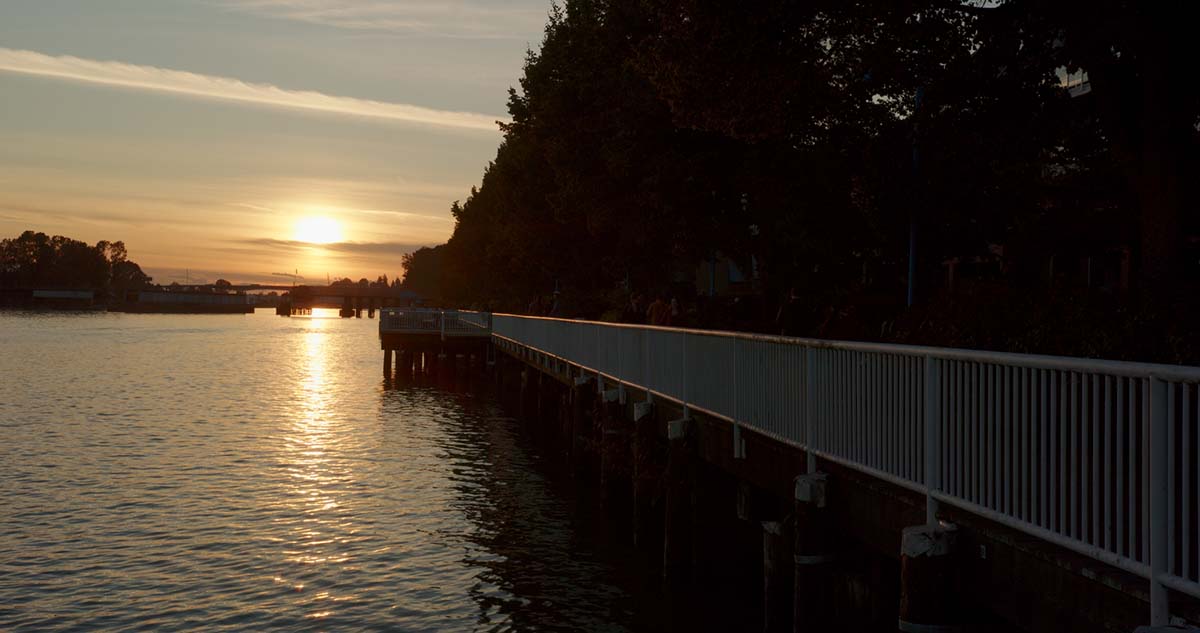
Shadows are clean when shooting into the sun and the colour rendition is excellent. Image: Rakesh Malik.
For most film productions, 4K is still more than enough resolution. Since the 12K can record 4, and 8K without cropping, and 6K with some minor crops, the data rate really is a non-issue. Record in a sensible 4K resolution most of the time, and only use 12K when there’s a need for extra resolution, like for extremely detailed keying, matte paintings, and that sort of thing.
Though it’s hard to find a modern cinema camera with bad image quality, with cameras like this on the market there’s no need to compromise.
Workflow
One of the reasons that quite a few people complained about the enormous resolution of the 12K is workflow; needing a high end workstation to work with the footage would add quite a bit to the price tag of the camera, so that is a legitimate concern. BMD has taken this seriously however. I’ve been grading and editing the footage on an M1 Mac mini with 16GB, a pretty economical computer. Blackmagic has been working hard to optimize Resolve and its SDK to perform well on low spec machines, and its efforts are paying off.
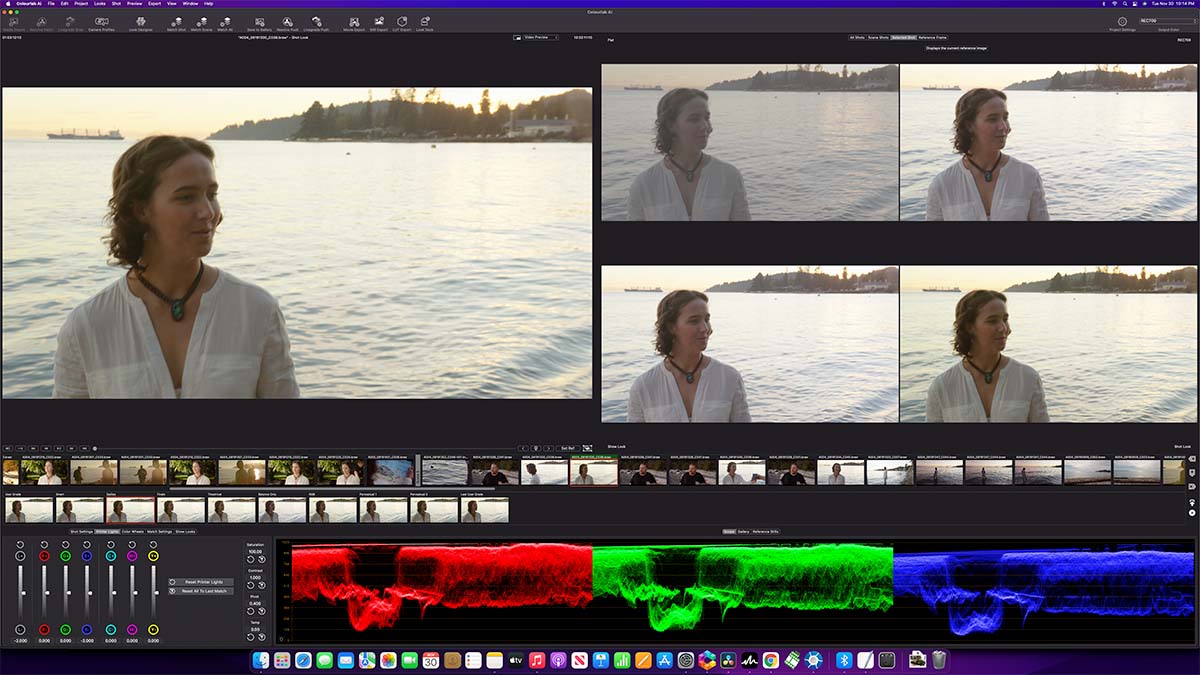
Using Colour Lab Studio to match shots taken with an URSA12K and a RED Komodo. Image: Rakesh Malik.
The footage is quite malleable in post as well, though anyone already used to working with Blackmagic Raw is already used to this. Equally important however is being able to match footage with that from other cameras. One both shoots, I had footage from two cameras to integrate. On one the 12K was the A-camera, and we had one moving shot on a gimbal, for which we used a Komodo. On the other I had footage from the Komodo to match with the 12K footage because I captured it after I had to send the 12K back to Blackmagic Design.
For both I used Resolve for the final grade, but I also used Colour Lab Studio to match the footage. I experimented with matching the 12K footage to the Komodo footage as well as the other way around, and both were pretty easy to accomplish. Fitting the 12K into a professional workflow will be pretty easy to do.
Wishful Thinking
There are some things that I hope that Blackmagic will improve. One is focus peaking. It’s a bit hard to see not he 12K; anyone used to being able to use focus peaking for critical focus on Sony and RED cameras will be disappointed. The 12K has a magnification feature that helps a great deal, but improved focus peaking would still be an improvement to operator friendliness.
There are times when recording in ProRes or DNxHR are advantageous to facilitate a rapid turnaround on a shoot. The 12K has no ProRes recording options though, so currently it’s simply not an option for such projects. While ProRes recording for resolutions above 4K would become extremely unwieldy due to the size of the footage, it would be great if the 12K allowed for ProRes recording for resolutions of 4K and lower. Although most prospective 12K owners are going to prefer Blackmagic RAW most of the time, 4K ProRes would enable them to use the camera for projects where turnaround is more important than raw.
Final Thoughts
When designing the 12K camera, Blackmagic clearly focused on professional use. Excluding HDMI in favour of additional SDI ports plus the extensive physical controls shows its emphasis on professional production use. The codec is robust enough to enable 12K footage to blend well with footage from other cameras, and the color is beautiful and natural.
If the 12K resolution and corresponding data rates are too much, then think instead of the 12K as a stellar 4K, 6K, or 8K camera with a 12K option.
Tags: Production Review Cameras


Comments